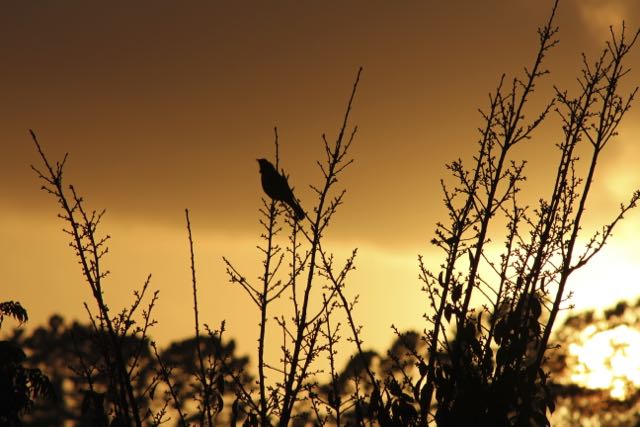A magazine where the digital world meets the real world.
On the web
- Home
- Browse by date
- Browse by topic
- Enter the maze
- Follow our blog
- Follow us on Twitter
- Resources for teachers
- Subscribe
In print
What is cs4fn?
- About us
- Contact us
- Partners
- Privacy and cookies
- Copyright and contributions
- Links to other fun sites
- Complete our questionnaire, give us feedback
Search:
How far can you hear?
by Dan Stowell, Queen Mary University of London

How do we know how many birds there are out there: in the countryside, and in the city? Usually, it's because people have been sent out to count the birds - by sight but especially by sound. Often you can hear a bird singing even when it's hidden from sight so listening can be a much more effective way of counting.
In the UK, volunteers have been out counting birds for decades, co-ordinated by organisations such as the British Trust for Ornithology (BTO). But pretty quickly they came up against a problem: you can't always detect every bird around you, even if you're an expert at it. Birds get harder to detect the further away they are. To come up with good numbers, the BTO estimates what fraction of the birds you are likely to miss, according to how far away you are, and uses that to improve the estimate from the volunteer surveys.
But, Alison Johnston and others at the BTO noticed that it's even more complicated than that: you can hear some types of bird very clearly over a long distance, while other birds make a sound that disappears into the background easily. If a pigeon is cooing in the forest, maybe you can't hear it beyond a few metres. Whereas the twit-twoo of an owl might carry much further. So they measured how likely it is that one of their volunteers will hear each species, at different distances.
They created mathematical models that took into account these factors. Implemented in programs the models can then adjust the reports coming in from the volunteers doing the counting. This is how volunteers and computers are combined in 'citizen science' work which gathers observations from people all around the country. Sightings and numbers are collected, but the raw numbers themselves don't give you the correct picture - they need to be adjusted using mathematical models that help fill in the gaps.


